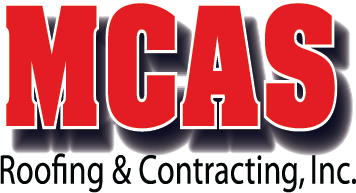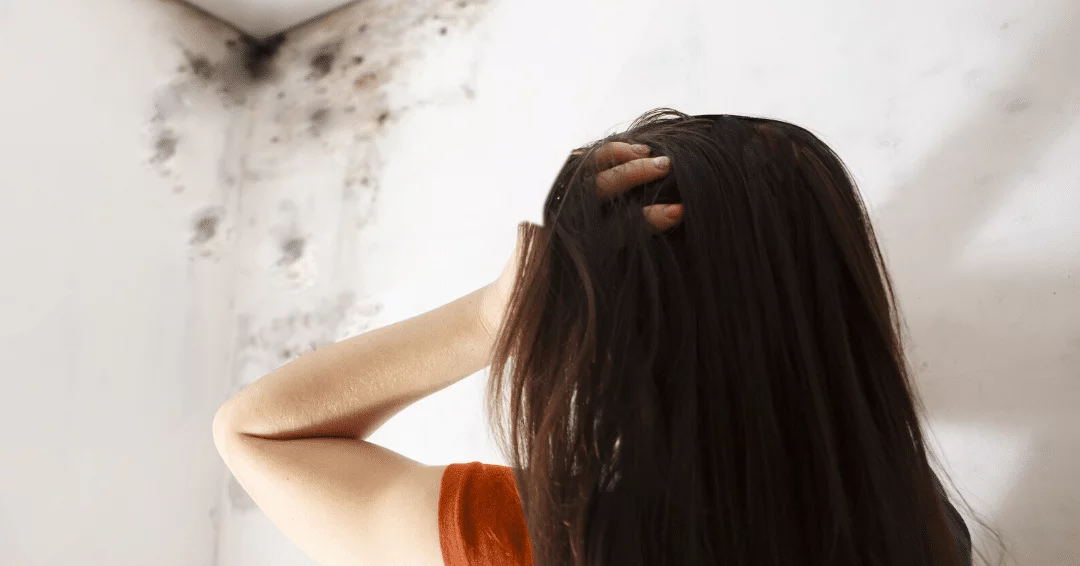We all know that mold and fungus is the last thing we want in our home, but what causes it? And how can you prevent mold and fungus on your roof and siding?
Top Causes of Mold & Fungus on a Roof
- Poor Drainage and Leaks
- Improper Ventilation
Poor Drainage and Leaks
We all know that water is an essential part of life, but also your home’s greatest enemy. When roofing the seams of your roof are not properly sealed, or if there are other issues with your siding or drainage, water can find its way in causing many problems
You are probably aware that a leaky ceiling is one common issue caused by water, but many people overlook the potential of black mold and fungus that result from water making its way in. This is why it is so important to maintain your roofing and siding to protect your home.
Improper Ventilation
Breathing is important to everyone and everything, including your house! Improper ventilation can also cause black mold and fungus, so make sure your roofing and siding can breath. If your attic fan is broken or not working properly, get a reputable roofer or contractor in to help restore it to working order.
Debris Build-Up
If your roof has a lot of leaves, sticks and other debris, it will become a breeding ground for fungus and algae. The natural materials contain algae and fungus spores. You can’t prevent them from falling on your roof, but you can limit the potential for growth my periodically cleaning the surface of your roof.
Indirect Sunlight
A lack of direct sunlight on your roof can help create the perfect environment for mold and fungus to grow. These elements thrive in the damp, cool air.
Problems Mold & Fungus Cause
Health Risks
Black mold and fungus growing on your roof should not be ignored. The safety of you, and your family depend on it. Fungus releases spores and other allergens that impact indoor air quality throughout your home. Families living in environments with mold or fungus present can suffer from hay fever-like symptoms or other more serious health problems. This means that your family can be at risk.
This also holds for commercial buildings and puts both your employees and customers at a risk, something you do not want. Roofs containing mold and/or fungus are more likely to eventually have their indoor air quality contaminated with mold spores. Not only is this dangerous, but it can get expensive fast. As the fungus grows on the outside of the roof or siding, it eats away the base of the exterior and expands and contracts with the outside air temperature.
Damages Your Roofing Material
Not only can black mold and fungus on your home’s exterior be dangerous to live around, but this growth and movement loosens the granules, dramatically shortening the life of your roofing and siding. Moss growing on a home’s exterior causes the shingle tabs to raise allowing water, ice, and rain underneath. The wind will blow off the tab causing expensive exterior repairs. Water under the shingle tab will enter the house and cause interior ceiling damage resulting in expensive interior repairs. It can also back up and cause ice damming in the winter, something we need to start worrying about here in Westchester and Putnam NY as the winter quickly approaches.
How to Prevent Mold & Fungus
Roof Cleaning
Ensure you clean your gutters and all debris from your roof at least twice a year. If your roof lacks direct sunlight, and is under a lot of trees, you should consider cleaning it every three months.
Power Washing
Professional power washing and cleaning with commercial grade cleaning agents that safely loosen and remove the organisms causing the roof and siding stains is safe and effective on wood, slate, concrete, vinyl siding, and virtually any hard surface. We use environmentally friendly products and processes that will not damage nearby vegetation and will not contaminate the environment.
Maintain and Trim Trees
If you find yourself constantly cleaning debris from your roof, consider trimming back the trees that are close to the roof line. In addition to reducing the required cleaning and maintenance, trimming your trees will reduce the risk of substantial damage from fallen trees during a storm. Cleaning up the tree can also allow more direct sunlight to hit your roof, helping to prevent unwanted growth on your shingles.
Roof Inspection
Homeowners like yourself can also do semi-annual exterior inspections so that you can catch black mold or fungus. If you follow safety guidelines you can walk your roofing once a year yourself if you know what to look for, however, at least once a year have a professional roofing inspector take a look because chances are they can spot smaller problems that you may not be able to see.


